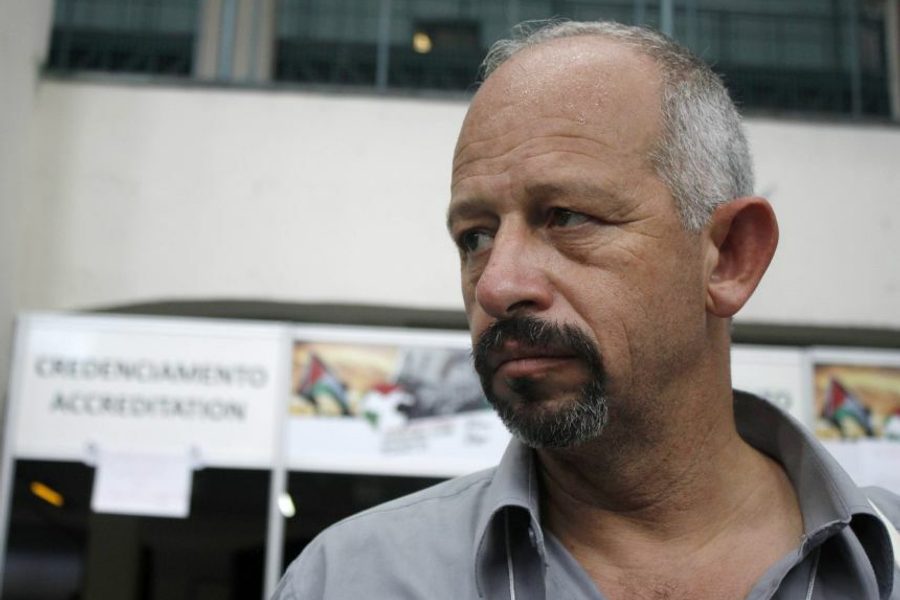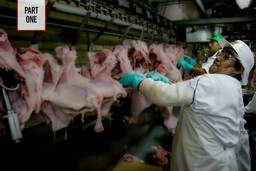The Palestinians Who Are Channeling Rage Into Nonviolent Resistance
As Israel brutally responds to the killing of three teens, many Palestinians—and Israelis—are waging campaigns of nonviolence.
Bethan Staton

Conflict has erupted in Israel and Palestine after the discovery of the bodies of three Israeli teenagers early last week, whom the Israelis say were kidnapped by Hamas. The Western media, for its part, has focused on the street battles between young Palestinians and the Israeli military, rushing to print photos of young Palestinian men throwing rocks and of masked Hamas militants armed at a press conference. However, these images are far from the whole story. On the ground Palestinian groups are acting to turn this rage into long-lasting nonviolent organizing.
Last week, the Israeli military sent tanks and troop reinforcements to the border between Israel and the Gaza strip and began heavy airstrikes that have killed at least seven Palestinians — the most recent development in the crackdown on Palestinian life that followed the disappearance of three settler teenagers approximately two weeks ago. Even before the bodies of the teens were found last Monday evening, Israeli had launched a large-scale incursion into West Bank cities, raiding some 2,200 homes, arresting 419 Palestinians and killing at least six.
The discovery of the boys’ bodies elicited sorrow, fury and — for some Israelis — a desire for revenge. Last Tuesday evening, crowds of Israelis chanted “death to Arabs” as they stormed through the streets of Jerusalem. The next morning, the body of 16-year-old Palestinian Mohammed Abu Khaider, who had been seen being forced into a car the night before, was found in a forest. In many ways, the violence and loss is unsurprising for Palestinians: It is, after all, an everyday reality here. But the intensity of the raids, scale of arrests, and very visible increase in threatened and actual violence from right-wing Israelis means the situation now feels different. For those working in the resistance movements, these are challenging and uneasy times. But they are also far from hopeless.
Jamal Juma, the coordinator of Stop the Wall, a coalition of Palestinian organizations, has experienced crises like these before.
“Stop the Wall started in 2002, in a very difficult and bloody situation,” he said. “We had massacres all over Palestine. But, despite that, we started organizing people in popular resistance.”
“At the moment,” he continued, “we are experiencing very brutal invasions, which remind us of the invasions that happened in 2002. They are sending a strong message to Palestinians: that nothing will be tolerated.”
The response in the streets, Juma maintains, has largely been neither obedient nor violent, but careful: marches and protests rather than “people shooting each other.” When the Israeli army launched Operation Brother’s Keeper last week in Hebron, groups like Youth Against Settlements mobilized by supporting families whose homes had been raided with calls and solidarity visits — essential practical support in the context of enormous isolation and fear.
Next week, beginning on July 9, the Stop the Wall coalition will launch what it hopes will be a broader and more unifying campaign. Scheduled to begin on the anniversary of the International Criminal Court’s decision on the illegality of the separation wall, the campaign will focus on two areas. In Hebron, a city fractured and closed off by Israeli settlements, the aim is explicitly to “lift the siege” through a burst of nonviolent demonstrations. In the Jordan Valley, where full Israeli control and settlement activity mean home demolitions are a constant threat, Palestinians plan to launch the Popular Council to Save the Jordan Valley, which seeks to unite the work of activists working across the region to document violations, coordinate resistance and support in the case of resistance, and mobilize media coverage.
“In the first Intifada we had strong trade unions, strong women’s institutions, youth movements,” Juma says. “These were the main causes of the Intifada, in fact. But now these structures are weak. We need to invest in them, to build them up.”
In recent years, Palestinians have responded to the humanitarian issues like dispossession or eviction, and the broader questions of occupation and colonialism, with a slew of creative tactics. Protest villages like Ein Hijleh, established in an abandoned village in the Jordan Valley, have drawn international media attention. Although the camps themselves are often quickly destroyed, the networks and awareness created by these projects are harder to break.
In Israeli society, too, nonviolent resistance and support for Palestinians still exists. And especially after the alarming violence and frightening racist incitement of the last few days, the awareness of a need for this organizing is stronger than ever. Ruth Edmonds explained to WNV that, while racist and nationalistic Israeli discourse is being amplified by social media, it is clearly on the rise. As a result, she said it’s important that we pay attention to the voices for peace inside Israel that are being ignored.
“It is utterly vital we recognize and pay attention to the voices which do not grab so much attention,” she said. “In Jerusalem over the next few hours there will be a number of vigils organized by various Jewish Israeli organizations to end the violence and racism now, before it gets out of hand.”
Of course, after the events of the past two weeks the appetite and patience for nonviolent resistance could well be wearing thin for many. The situation on the ground, Juma explained, is “boiling” — and as the temperature rises, it could likely explode. Issa Amro, an organizer with Youth Against Settlements in Hebron, is keenly aware of the difficulty of promoting nonviolent organizing in this context. “Unfortunately, not all of our campaigning works so well,” he said. “The international media continued to focus on just one side, as if settlers were the only civilians.”
The feeling that nonviolent means of resistance is ignored by the world leads to immense disillusionment. In April, for example, Palestinian prisoners embarked on a hunger strike in Israeli jails to protest administrative detention. Despite the fact that detainees — who are effectively being held indefinitely without trial — went on hunger strike for more than 50 days, their plight was largely ignored by the world. Eventually, it came to an end when the Israeli government hurried through a bill that legalized force-feeding.
“We spread the message of nonviolence, but unfortunately the violence people experience does affect us,” Amro said. “A small protest we held was met with tear gas and rubber bullets.”
He explained that movements like Youth Against Settlements are growing, but that violence such as the construction of new settlements inevitably has an effect.
“This operation [by Israel] is a massive barrier to the goal of creating a nonviolent movement in Palestine,” he said. “Israeli authorities are doing this to provoke people.”
To Juma and other organizers, the important thing is that people’s rage at the violence that is inflicted on them get organized into long-lasting movements.
“When 400 people confront the Israeli military in Balata or Ramallah or Shuafat, there’s not a movement behind them, it’s just people defending themselves, reacting to provocations,” he said. “We saw that in the first Intifada. It was a people’s reaction, going to the street and demonstrating. But at some time this needed to be organized. That’s how we need movements to form, through leadership, and through organizing.”
Reprinted with permission of Waging Nonviolence.




